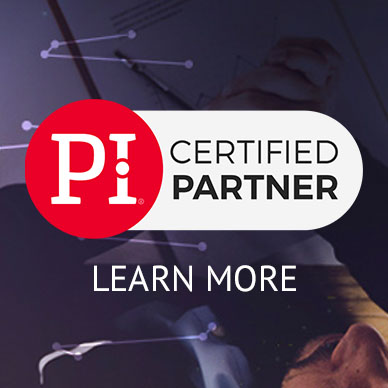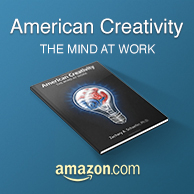During a recent consulting project, an attorney relayed the following quote:
When I first began my law career, I lost a lot of cases that I should have won. Now that I’ve been practicing for 20 years, I’ve won a lot of cases that I should have lost.
His quote hints at an issue that most professionals have contemplated: At what age does someone pass the (imaginary and invisible) threshold of credibility? At what point does someone’s life and work experience suddenly become trustworthy, professionally acceptable, and worthy of admiration and discussion? Although there are no straightforward answers to these questions, they resonate with a wide audience because these issues invoke important human emotions such as trust, knowledge, experience, credibility, and fear. To harness the creative potential of an entire work force, we need to first unharness the rigid hierarchies, structures, and mental categories that limit organizational and personal development.
As a quick caveat, I am not suggesting a fresh college graduate could run a law firm or that a new hire could lead a multinational engineering project. I am arguing that too many experienced professionals dismiss the ideas of younger colleagues simply based on their age and perceived inexperience. The following article critiques this problematic pattern which has slowed the professional development of young workers. Before we discuss solutions for overcoming why novice professionals are treated condescendingly in the workplace, we need to first address the problem and its causes.
The Problem: Limited Paths
There are many reasons why grizzled professionals discount the knowledge, experiences, and ideas of younger people. This isn’t a new problem. If an organization wants to improve intergenerational communication at work, increase its productivity, and enhance collective creativity, they need to understand why people consistently disregard the first 30 years of a person’s life. We need to look at the paths that guide organizational decisions and actions in addition to individual fears.
Irrational Disbelief. Younger employee’s ideas are often overlooked because more experienced colleagues just don’t believe that young people can discuss anything worth thinking about. How can we know anything about another person’s experiences unless we give them time to explain their way of doing something? We should be more concerned with the thought process behind an idea rather than the age of the individual providing it.
Hazing Mentality. We love to force others to go through the same trials and tribulations that we experienced. This is a morbid form of reverse-empathy. It is morbid because we consciously reproduce the feelings of inadequacy in our younger coworkers that we experienced when first entering our professions. When we dismiss young people’s ideas simply because they are young, we are doing ourselves and our professions a disservice. This process is based on the belief that useful outcomes will emerge if others experience the same misfortunes that we did. Nothing could be further from the truth.
Path Dependence. Most people prefer to take the well-worn path because creating new paths and mapping new territories is dangerous work, especially for professional identities. Established organizations and cultural norms don’t embrace trailblazers, so instead of thinking about the best way to do something, experienced professionals turn to the way things worked previously for them. This is not an innovative mindset. Of course we must rely on our past experiences as a resource, but if we only apply previous solutions to future problems, organizations become stagnant. Young professionals often suggest new paths that organizational leaders didn’t know exist, but it’s up to the leaders to allow the young people to break ground on those new paths.
Ingrained Deference and a Lack of Confidence. We are born into a system of human interaction that is already set in motion. People worked very hard to set up those systems and processes, and they go to great lengths to preserve them. We grow up surrounded by “omniscient organizational authorities” and have normalized the idea of our dependence on them. This has become so deeply ingrained that young people inherently know to ask permission rather than forgiveness. That is, we have been taught to ask permission to act rather than take action and responsibility for the positive and negative consequences. In addition, when young professionals are condescended and ignored in the workplace, they lose confidence in their ideas until they have no ideas left to offer.
We have limited paths for solving our work problems, so instead of looking for innovative ideas we prefer to rely on past solutions, even if they are outdated and don’t fit the problem.
Why so Few Paths?
Managers choose well-worn paths because of how it makes them feel (i.e., credible) and the probable outcomes associated with them. Organizations need to rethink their internal decision making structures, however, if they want to get the most out of their work force. There are too many outdated human systems, too many rigid hierarchies, and too few processes for identifying and disseminating the knowledge of novice professionals. Instead of relying on systems that reward job tenure and experience, why not champion systems that focus on discussing, evaluating, and selecting the best ideas, regardless of who they come from? Focus on the ideas and not the identity of who they come from.
Another reason that experienced professionals pay little attention to what inexperienced colleagues have to say is the rapidly changing technology environment. I often hear veterans tell war stories of “how things used to be” in an organization – those stories are important because they form part of the organizational culture. But things aren’t that way anymore, which is always an unspoken theme in organizational war stories. As Bob Dylan said, the times, they are a-changing. Many veteran employees and decision makers are fearful when they hear younger colleagues talking about new software systems, mobile applications, and the cloud. People are scared of change because it entails uncertainty.
Fear may be the most basic human emotion and can actually be a useful tool when controlled, but it can also prevent us from making valuable connections, from seeing new and better ways of doing things, and from learning. People shy away from potentially useful discussions by invoking their “experience” as a trump card. At the very least, an honest conversation would allow a veteran professional (a) to explain why they are disregarding what the younger person is saying and (b) address their internal fears at the same time.
A Path with Two Trails: Overcoming the Double Bind of Experience
Although much of this article has focused on how and why experienced professionals disregard the ideas of younger professionals, to have an effective solution we need to discuss what both groups can do to bridge their knowledge gap and see the utility of each other’s experiences.
The double bind of experience means that you can’t get a job unless you have experience but you only get relevant experience by having a job. This scenario circumvents the useful friction that is created when inexperience bumps into established ways of doing things. If organizations ever want to tap into the knowledge base of their younger employees, they need to come up with creative processes for creating useful human friction. One system that is doing just this is called Reverse Mentoring. This is where organizations pair up experienced employees with new hires and allow the new hire to mentor the veteran. This phenomenon is producing extraordinary results because it allows for novel solutions to old problems, it encourages employees from different generations to get to know each other, and it sends a positive message to new employees: you are valued. Reverse Mentoring also expands people’s comfort zones, because the only way to become more comfortable with change and uncertainty is to experience and discuss them. If these mentoring programs are to be more than a fleeting fad, business leaders must rethink the relationship between knowledge, skills, abilities (KSAs), and age. Credibility should be the result of KSAs and not someone’s age.
Instead of worrying about a person’s age and identity – which is a self-conscious defense mechanism for people who are conscious about their own age and experience – ask yourself if the ideas are useful. Don’t condescend young professionals by treating their suggestions as ‘cute,’ especially if they continuously provide suggestions. There is no quicker way to kill creativity than to condescend it.
Early in their careers, how many experienced professional do you think told Mark Zuckerberg, Steve Jobs, Bill Gates, and Albert Einstein to scale back their dreams to keep them more in line with current organizational thinking and norms? I bet they often heard some form of this paternalistic criticism throughout the early phase of their careers but not once they “achieved success.” For these trailblazers, success means not allowing your inabilities to interfere with your abilities. Successful young professionals have confidence in themselves, create a vision, and don’t let anyone deter them from it. Unfortunately, there are too many people who feel uncomfortable dealing with confident young people, and consequently the young professionals allow these insecurities to affect their confidence.
To summarize, experienced professionals have often gotten too comfortable with their work habits and environment, they may experience complacency, might not be effectively challenged, and they often treat learning like a virus: something to be avoided. On the other hand, ambitious young professionals are hungry for advancement, ready to learn, and eager to positively transform their work environment. Instead of focusing on the differences between younger and older employees, organizations should look for multiple ways to accomplish their goals that involve interactions between the young go-getters and the experienced veterans.
Organizations should not be asking, “Do they have enough experience,” but instead, “What do they know that can help solve this task?” Since there is no specific age or organizational rite of passage that represents when someone gains credibility in the workplace, it is up to multiple generations to bridge their knowledge gap and tap into each other’s life experiences. This can only occur through serious, honest, and well guided communication. If organizations want to professionally develop all of their employees, they should find ways to jumpstart the path to effective knowledge management and look for ways that young professionals can best contribute to the work environment.
Strategies for Reframing Accusations of Inexperience (You’re Too Young…)
- I understand that my inexperience could be perceived as an issue, but give me a chance to explain my idea and I think you might better understand where I’m coming from.
- We obviously see this issue from different perspectives, which isn’t necessarily a bad thing. I listened to your explanation and I would hope that you would do the same for me.
- I do have less experience than you. But can’t good ideas come from inexperienced people?
- I understand that my age is an issue, but can we talk for a second about my track record? Look at the things I have accomplished…



